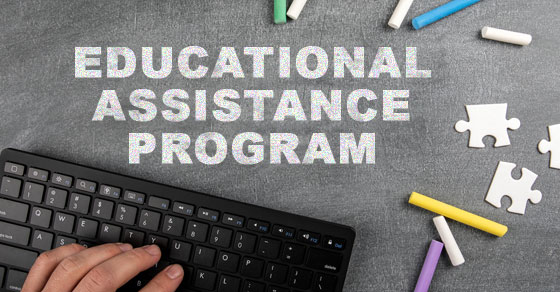
Can Employers Help Employees With Outstanding Student Loans?
Qualified educational assistance programs, sometimes referred to as “tuition reimbursement programs,” are a relatively popular employee benefit. Employers can use one to provide up to $5,250 per employee per year as a tax-free fringe benefit for undergraduate, graduate and continuing education courses.
However, a commonly asked question is: Can employers also use such programs to help employees repay outstanding student loans — say, from college?
Important points
The short answer is yes. Under the loan repayment provision of Internal Revenue Code Section 127, a qualified educational assistance program can be used to help employees repay certain student loans. But this benefit is available only for a limited time and other restrictions apply. Here are some important points to consider:
Expiration date. The loan repayment provision will expire at the end of 2025, unless Congress extends it.
Eligible loans. Loan repayment benefits can be used to pay principal, interest or both on any qualified education loan incurred by an employee for the employee’s education. For this purpose, the term “qualified education loan” has the same meaning as it has for the federal income tax deduction on education loan interest. This covers most loans for students who are or have been enrolled at least half-time in a degree program at an accredited post-secondary institution.
Method of payment. Employers may choose to pay the lenders directly or reimburse the employees. Direct payments may offer greater assurance that the funds are being properly used. Employers offering reimbursements should adopt substantiation procedures that reasonably assure qualifying loan payments are made.
Amount limitation. Student loan repayment assistance will be combined with any other educational assistance when applying the $5,250 aggregate annual limit on educational assistance benefits. Consequently, payments for any other types of educational assistance offered will reduce the nontaxable amount available to employees for student loan repayments.
Nondiscrimination. If an employer doesn’t make the same benefits available to all employees, it will need to demonstrate that benefit eligibility doesn’t discriminate in favor of highly compensated employees. Whether or not all employees can participate equally in it, an educational assistance program must limit benefits so that not more than 5% of the benefits paid during a year are paid to those who own more than 5% of the organization.
Documentation. New qualified educational assistance programs must be put in writing. Doing so entails preparing and adopting a document that describes all program features, including student loan repayment assistance. An employer will need to amend an existing program document to add student loan repayment benefits, unless the program already authorizes any type of educational assistance within the meaning of Sec. 127.
Notification. Eligible employees must be given reasonable notification of the program’s availability and terms.
A good fit
A qualified educational assistance program can be an excellent way to fund professional training and continuing education for employees. And, for a little while longer, it may also help attract and retain workers struggling to repay student loans. Our firm can assist you in determining whether one of these programs is a good fit for your organization.
© 2023